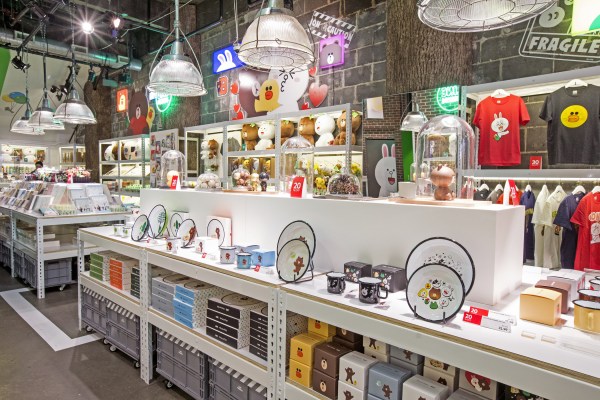Messaging app Line, which aspires to be more than just a communication tool, announced today that it will launch an investment fund to grow its network of services. Called LINE Life Global Gateway, it is worth about 5 billion yen (or $42 million). LINE Corp, the messaging app’s owner, will use it to invest companies that provide online-to-offline (O2O), e-commerce, payment, media, and entertainment services.
The fund is a key part of Line’s strategy to make sure that its future earnings does not depend too heavily on its messaging app or connected games platform, which the company currently derives most of its revenue from.
In September, Line said it was delaying its initial public offering to “expand the business globally.” Then during a company conference the next month, Line COO Takeshi Idezawa (who was recently promoted to CEO), declared “the keyword of our future is ‘life’… Line is the smartphone gateway for your life.”
In other words, Line is transforming itself from a SMS replacement to a lifestyle platform that may eventually touch on all of the most essential services people can access from their smartphones.
A representative told TechCrunch Line is currently talking with companies, but didn’t give more information about where or when it will make investments from its new fund. In the past six months, though, Line has already spent money to buy MixRadio from Microsoft (its first-ever acquisition), took a stake in Japanese game maker Gumi, and invested in South Korea’s 4:33 Creative Lab Games Studio.
Last month, Line, which currently claims 181 million monthly active users, disclosed that it grew its 4Q2014 revenue 62 percent year-over-year to 221.7 billion won, but that was still shy of analysts’ targets. The shortfall was especially notable because it was due to slowing sales from just one of its top game titles, Line Rangers. This was an important reminder that Line cannot rely too heavily on just a handful of revenue sources (it also makes money through official accounts run by brands and celebrities, as well as sticker sales).
Furthermore, while Line is the top messaging app in Japan, Taiwan, and Thailand, its user base still trails behind WeChat, which is the top messaging app in China with 468 million users, and Facebook’s WhatsApp, which has 700 million users.
Line wants to increase its presence in Indonesia, the Philippines, Colombia, and Mexico, as well as the U.S., but it’s important for the company to figure out how to make more money from its current key markets while tackling the uncertain process of growth in other countries. Offering an array of services in different verticals may be the solution.
One of its most important recent launches is Line Pay, a mobile payments service integrated into the messaging app. It currently allows users to connect a credit card to the app and make payments at affiliated online and brick-and-mortar stores, making it a core part of Line’s e-commerce strategy. In the future, Line Pay will also let users send money to one another, Venmo-style.
In addition to Line Pay, Line’s platform has already extended to food delivery, indoor maps, and taxi-calling services in Japan. On the entertainment side, Line plans to use MixRadio to build a streaming music service that will be separate from its messaging app. In Thailand, Line recently launched a YouTube-like video service called Line TV that streams shows from Korea, Thailand, and Japan through Android and iOS apps, as well as on the web (an interesting departure from Line’s mobile strategy).
Even though services like Line TV and Line Camera are separate apps, they are still integrated with the main messaging app. For example, Line TV lets users share content through Line and videos have links to the official accounts of celebrities featured in them. This strategy not only gives Line more potential sources of revenue, but may also help it attract new users while retaining existing ones.
Other Asia-based messaging apps include WeChat and KakaoTalk. Though they dominate different markets (WeChat and KakaoTalk are China and South Korea’s top messaging apps, respectively), each company is also pursuing similar strategies to Line. Tencent, which owns WeChat, has also seen its bottomline hurt by slowing revenue from its core mobile games business. Tencent is adding more game titles, but it also positioning its messaging app as a lifestyle platform (for example, one popular service integrated into WeChat is taxi-calling service Didi Dache, a Tencent investment). WeChat’s payment service also allows users to pay utility bills through the messaging app.
Daum Kakao, meanwhile, is preparing a taxi-calling service and has already launched Kakao Pay, which, like Line Pay, lets users transfer money with the messaging app.
While it’s still uncertain how well Asia’s messaging apps will do as lifestyle platforms, their efforts are a clue to how their Western counterparts, including Facebook Messenger and Snapchat, may monetize. For example, Facebook Messenger already sells stickers and has hinted at launching accounts for brands and a payments service, while Snapchat is busy turning itself into a content platform with the recent launch of its Discover feature.
